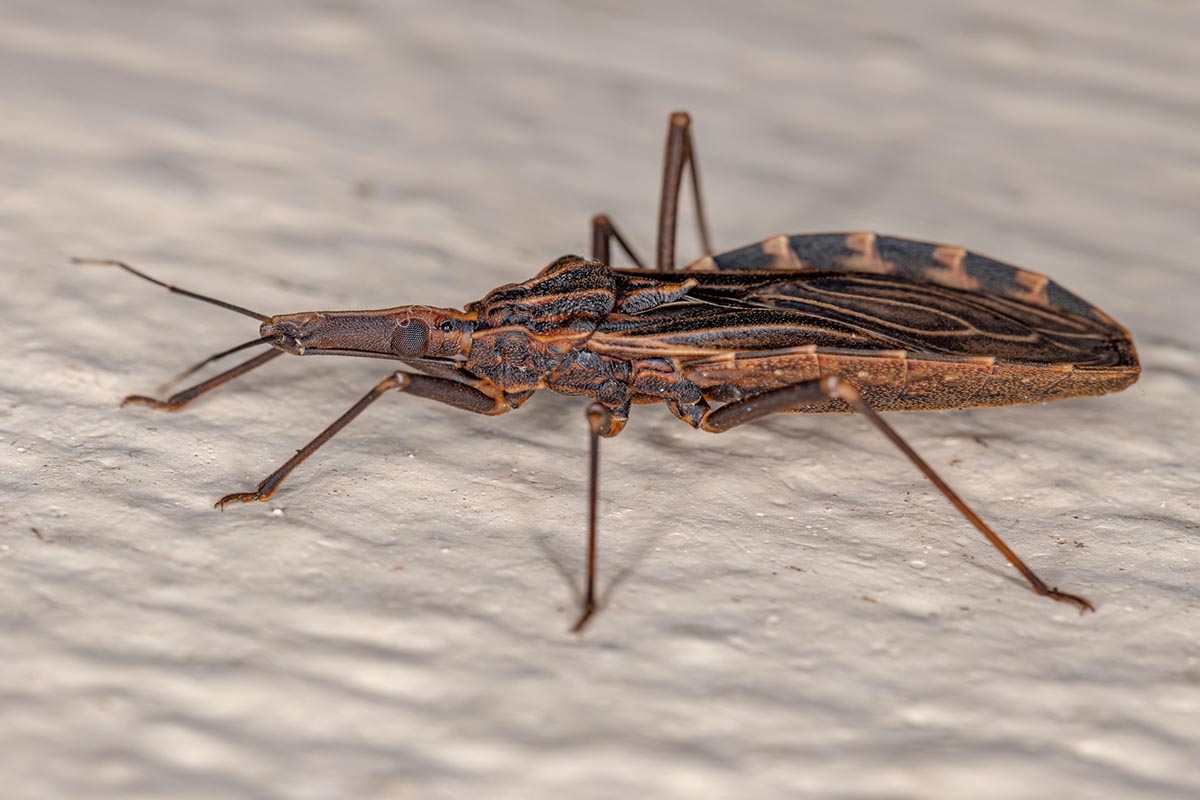

We may earn revenue from the products available on this page and participate in affiliate programs. Learn More ›
Don’t be fooled by the seemingly harmless name: Kissing bugs, which are a specific type of assassin bug, carry diseases that can affect humans and animals. These bugs got their moniker from the belief that they had a tendency to bite around the eyes and mouth; however, a kissing bug can bite a human or animal on any part of the body. It’s essential to find ways to keep these pesky, nocturnal insects out of your house. A kissing bug bite isn’t harmful to everyone who’s bitten, but there is a risk of infection from feces left behind after this bug has bitten its victim. If you live in the warm southern region of the country, it’s likely you’ve seen these insects and want to know how to get rid of kissing bugs.
Time required: 1 to 2 days
Difficulty: Intermediate
Estimated cost: $20 to $170
Tools & Materials
Bobvila.com may earn a commission from purchases made through these links.
Before You Begin…
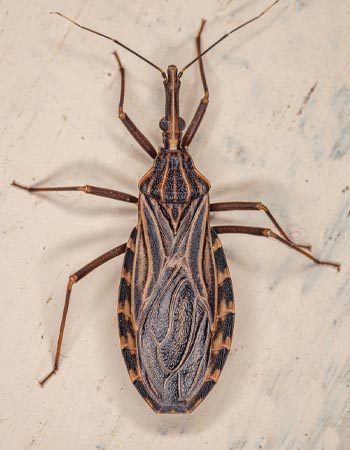
Though these insects seem harmless, they may carry a disease called Chagas disease. After a kissing bug has finished feeding on its host, it defecates near the bite. If that particular bug is a carrier of the Trypanosoma cruzi parasite, which causes Chagas disease, the host can experience symptoms of the disease, including fever, vomiting, fatigue, headaches, body aches, diarrhea, loss of appetite, and a rash. Some people and animals who have Chagas disease develop chronic complications, including heart problems. That is why it’s essential to work cautiously around a kissing bug infestation to avoid being bitten and potentially infected with Chagas disease. You can purchase a few common items to help prevent kissing bugs from getting in the house. In general, calling a pest control company is the safest and most effective way to thoroughly eliminate kissing bugs and protect you and your family from this kissing bug disease.
Tips for How to Get Rid of Kissing Bugs
- Seal any cracks or holes where insects can crawl into the house, including windows, doorjambs, roofs, plumbing and electrical areas, and the foundation.
- Turn off any unused exterior lights to avoid attracting insects.
- Move any wood or debris piles away from the house.
- Use an insecticide spray with pyrethroid to control an infestation.
Safety Considerations
- Work during the day to avoid spending time in areas where kissing bugs are active at night.
- When using spray chemicals, make sure the area is ventilated.
- Do not touch a kissing bug with bare hands or squish it on the floor to avoid coming in contact with any diseases it may carry.
STEP 1: Identify the kissing bugs and their source.
Kissing bugs are easily confused with similar-looking insects, such as stink bugs, squash bugs, and wheel bugs, which is why it’s important to carefully identify the type of bug you’re dealing with before addressing the problem. Searching “kissing bug vs stink bug” shows that the two bug types are often mistaken for one another, but there are some clear differences. Per Texas A&M University, a leading research institution on kissing bugs, adult kissing bugs are typically around ½ to 1 inch long and have black or very dark brown coloring on most of their oval-shaped body. Some species have red, orange, or yellow stripes around their abdomen. Their most identifiable feature is a unique cone-shaped head, along with thin antennae and thin legs.
Typically, kissing bug locations are in the southern region of the U.S., especially from Arizona to Texas, but they have been seen in other, more northern states. They are nocturnal, so they will hide in dark, dry crevices during the day. Any cracks in furniture, walls, or floors are a potential home for kissing bugs, as well as under beds or near pet beds. Kissing bugs will hide in any outdoor debris piles from bricks to leaves, and they can be found close to areas where animals reside, such as outdoor dog kennels.
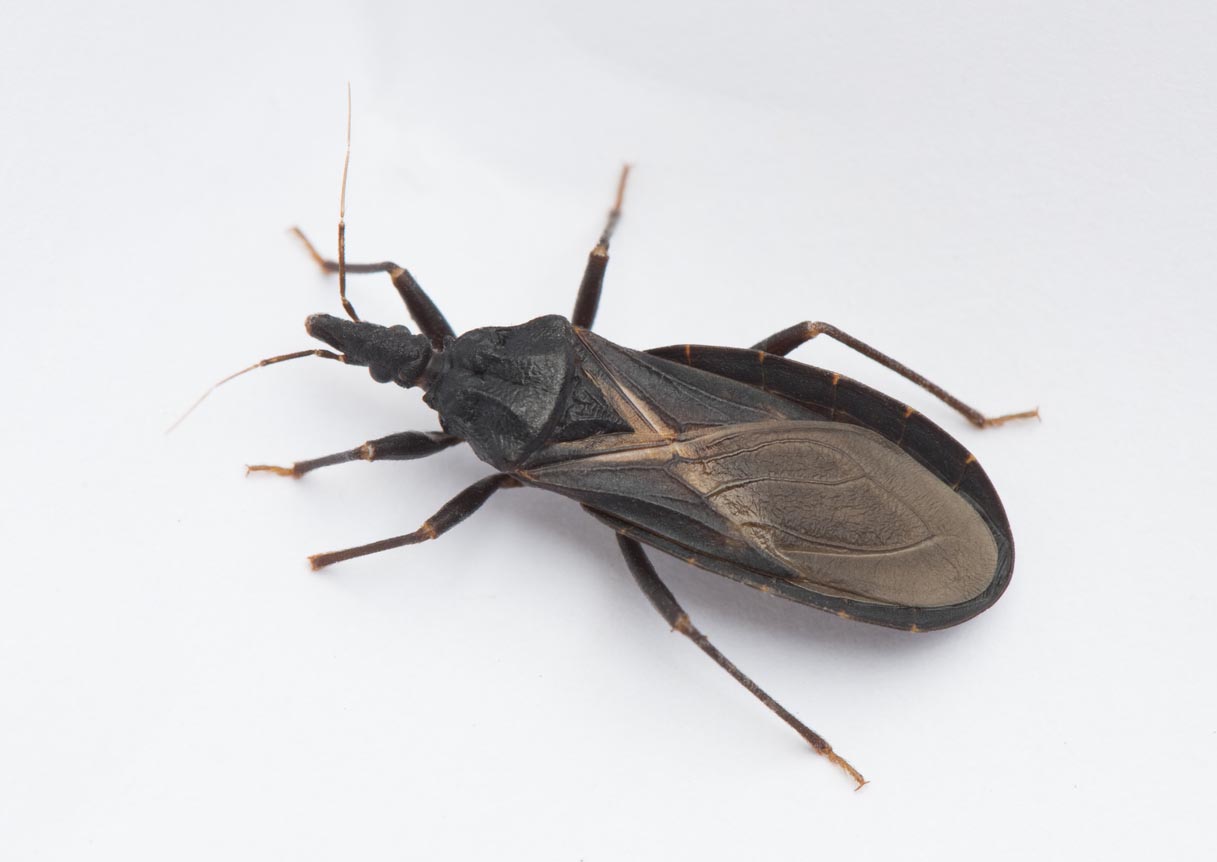
STEP 2: Seal any cracks or gaps in windows, doors, walls, and the foundation.
Seal off any small gaps where kissing bugs could get into the house looking for accessible food sources. Inspect around doors, walls, windows, and the foundation and caulk or repair any cracks or holes. If window screens have tears of any size, you’ll want to replace or repair them. Make sure the weatherstripping on the bottom of any outside door is in good condition.
STEP 3: Check the areas where pets sleep.
Pets like dogs and cats are easy targets for kissing bugs, which is why it’s not uncommon to find them close to areas such as dog and cat beds or outdoor dog kennels. Pets can also become infected with Chagas disease if they ingest a kissing bug that carries the parasite. Kissing bugs can’t attach to your pet the way ticks do, so it’s unlikely they could catch a ride this way, but they like to stay close to their food source so they can easily feed when everyone’s asleep. It’s a good idea to closely look at the area near pet beds to check for kissing bugs so you can take action quickly if they are present.
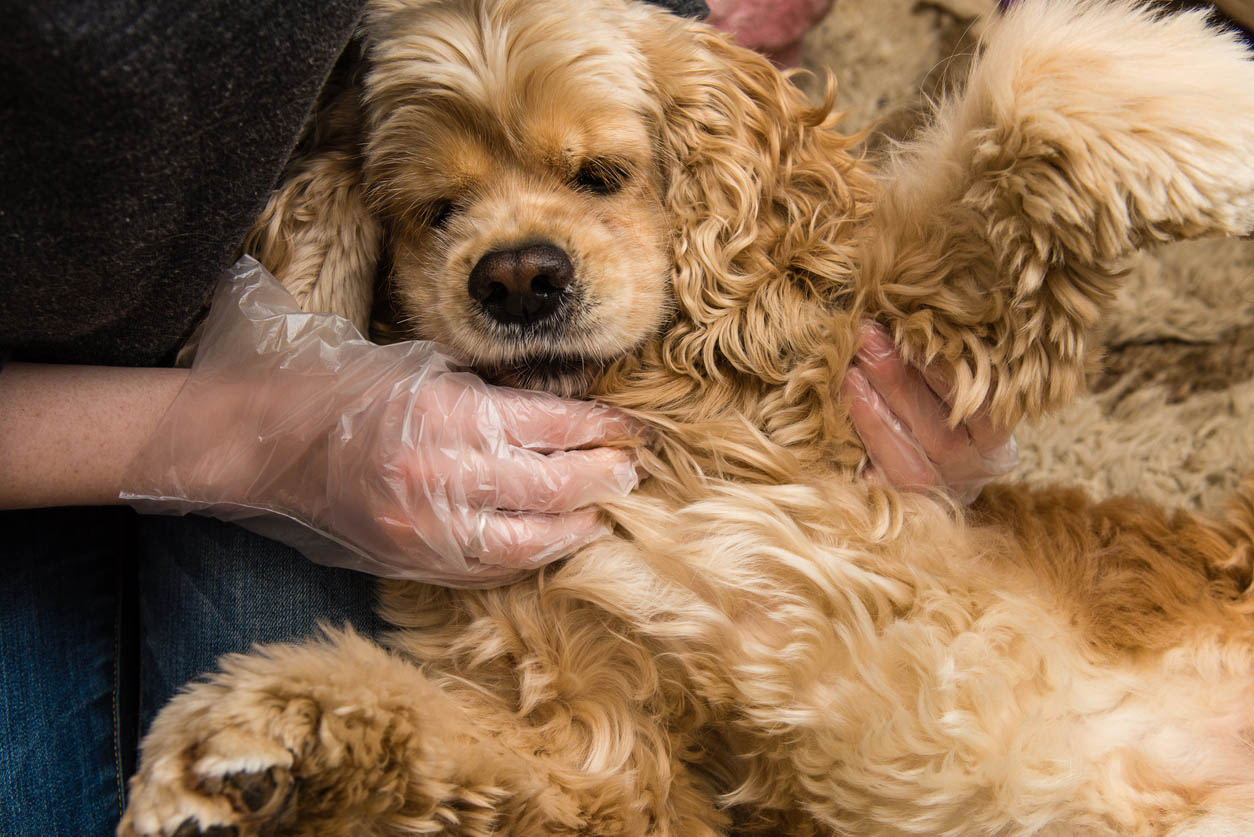
STEP 4: Keep the yard clear of debris, and move firewood piles away from the house.
An overgrown backyard can attract all kinds of critters, such as mice and other rodents, or even creatures such as raccoons and opossums. Firewood piles are also a great place for small mammals to hide. Since kissing bugs feed on blood, they may be found close to these areas where mammals live. If a woodpile is located near the house, it gives kissing bugs and any other pests easier access to the home through cracks or gaps. Moving a woodpile away from the house is recommended even if there isn’t an active infestation, as is keeping the area close to your home maintained to prevent mammals from nesting there.
STEP 5: Turn off outdoor lights when not in use, and use a bug zapper.
Using a porch light at night adds security for homeowners, but it also attracts unwanted insects. Months, flies, mosquitoes, and kissing bugs are all attracted to bright lights at night. If you’ve noticed a significant number of insects around your outdoor lights, it’s a good idea to turn them off when they are not actively being used.
The best bug zappers can also be effective in killing any bugs that make it too close to your home. An insecticide spray with pyrethroid is handy for killing individual bugs that may have made it inside. If you use pesticides, be sure to read the label and apply only as directed.
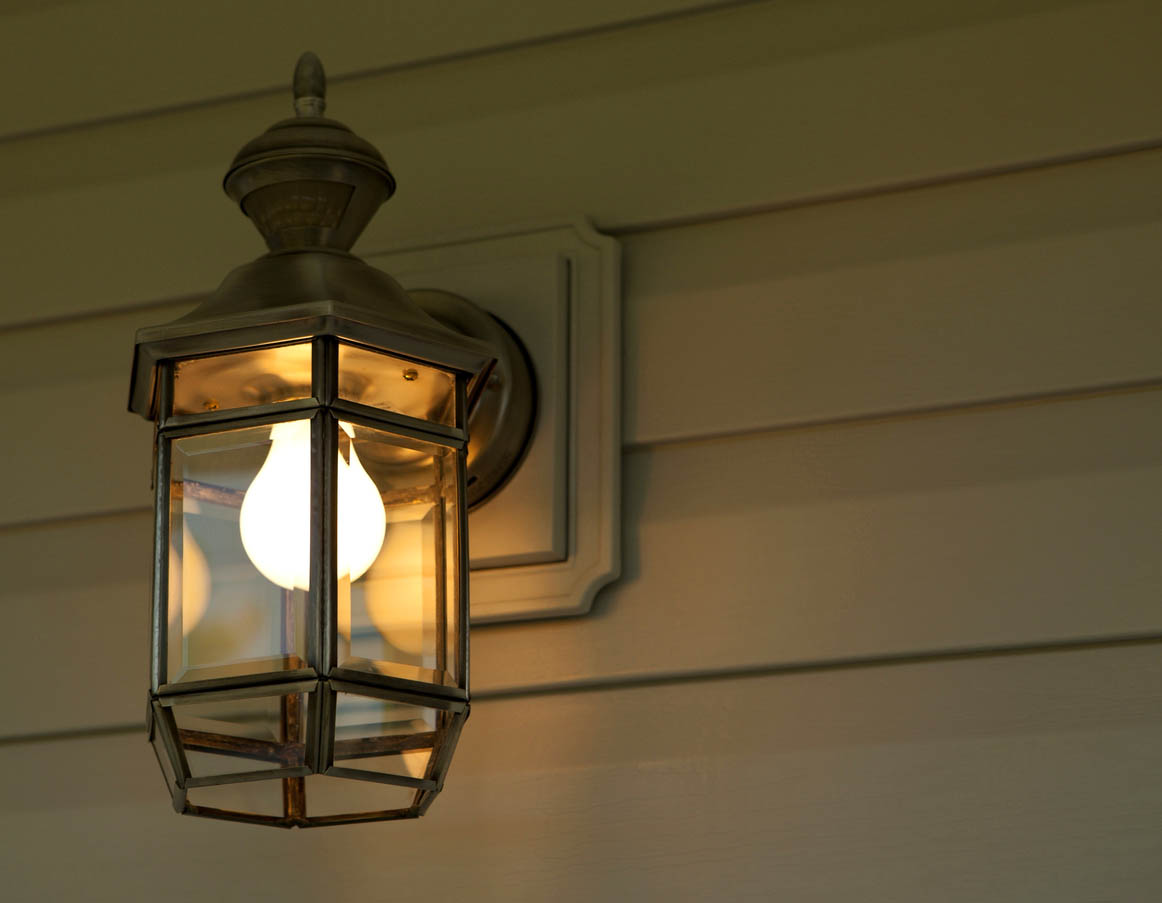
STEP 6: Contact a pest control professional.
While these tips can help prevent kissing bugs and other insects from invading your home, these pests may still be living in your yard. Once kissing bugs have taken up residence on your property, it’s more likely they’ll eventually end up in your house. The best choice is to call one of the best pest control companies like Orkin or Terminix to help manage the infestation before it becomes a bigger problem, according to Professor Michael Levy from the Perelman School of Medicine at the University of Pennsylvania. “Work with an extension agent or a pest control company to discuss integrated pest management (IPM) strategies,” he recommends. Leaving these insects in your yard can be merely a waiting game until they arrive in your home. Hiring an expert is the safest way to make sure kissing bugs stay far away and keep your family safe and healthy.
A kissing bug bite is no fun, and the bites can pose a risk to humans. Since the bugs are nocturnal, they are not easily discovered until it’s too late. With these ideas for preventing kissing bugs from entering your house, you’ll be better prepared to avoid an indoor infestation, and a pro can help reduce the kissing bug population outdoors so you and your family can enjoy your yard safely and in peace.
